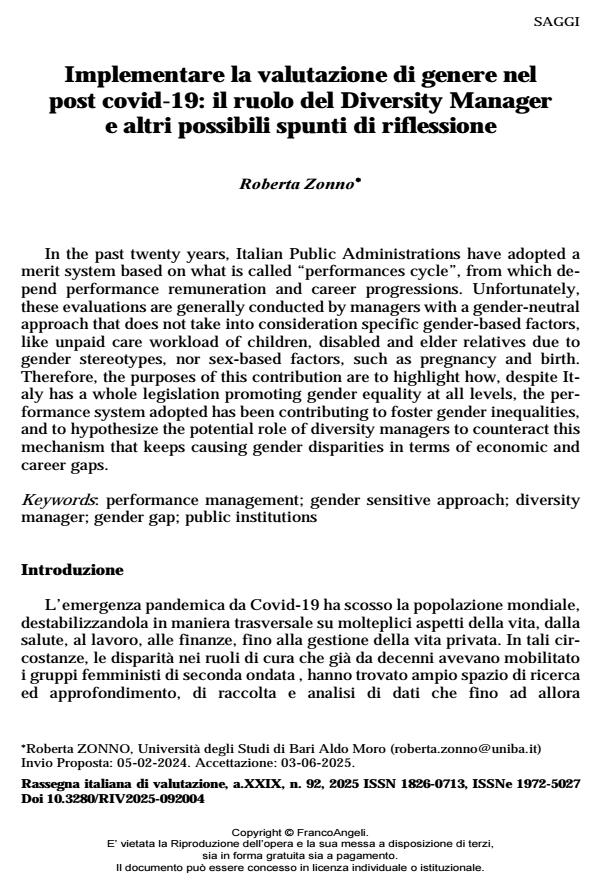Implementare la valutazione di genere nel post covid-19: il ruolo del Diversity Manager e altri possibili spunti di riflessione
Titolo Rivista RIV Rassegna Italiana di Valutazione
Autori/Curatori Roberta Zonno
Anno di pubblicazione 2025 Fascicolo 2025/92
Lingua Italiano Numero pagine 18 P. 58-74 Dimensione file 181 KB
DOI 10.3280/RIV2025-092004
Il DOI è il codice a barre della proprietà intellettuale: per saperne di più
clicca qui
Qui sotto puoi vedere in anteprima la prima pagina di questo articolo.
Se questo articolo ti interessa, lo puoi acquistare (e scaricare in formato pdf) seguendo le facili indicazioni per acquistare il download credit. Acquista Download Credits per scaricare questo Articolo in formato PDF

FrancoAngeli è membro della Publishers International Linking Association, Inc (PILA)associazione indipendente e non profit per facilitare (attraverso i servizi tecnologici implementati da CrossRef.org) l’accesso degli studiosi ai contenuti digitali nelle pubblicazioni professionali e scientifiche
In the past twenty years, Italian Public Administrations have adopted a merit system based on what is called “performances cycle”, from which depend performance remuneration and career progressions. Unfortunately, these evaluations are generally conducted by managers with a gender-neutral approach that does not take into consideration specific gender-based factors, like unpaid care workload of children, disabled and elder relatives due to gender stereotypes, nor sex-based factors, such as pregnancy and birth. Therefore, the purposes of this contribution are to highlight how, despite Italy has a whole legislation promoting gender equality at all levels, the performance system adopted has been contributing to foster gender inequalities, and to hypothesize the potential role of diversity managers to counteract this mechanism that keeps causing gender disparities in terms of economic and career gaps.
Parole chiave:performance management; gender sensitive approach; diversity manager; gender gap; public institutions
Roberta Zonno, Implementare la valutazione di genere nel post covid-19: il ruolo del Diversity Manager e altri possibili spunti di riflessione in "RIV Rassegna Italiana di Valutazione" 92/2025, pp 58-74, DOI: 10.3280/RIV2025-092004